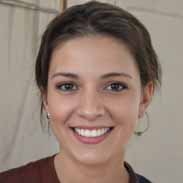Adaptive Immunity Questions And Answers – Flashcards
Unlock all answers in this set
Unlock answers| Adaptive Immunity |
The body's ability to recognize anddefend itself against distinct invaders and their products. ; -Specialized immune response -Always specific |
| -Specificity -Inducibility -Clonality -Unresponsiveness to self -Memory |
| Five attributes of Adaptive Immunity |
| Specificity |
Property of Adaptive Immunity: ; Can only act against one particular shape and not others |
| Inducibility |
Property of Adaptive Immunity: ; Cells can get activated only in response to specific pathogens |
| Clonality |
Property of Adaptive Immunity: ; Cells can proliferate to form many generations of identical cells called clones |
| Unresponsiveness to self |
Property of Adaptive Immunity: ; Cells are self tolerant |
| Memory |
Property of Adaptive Immunity: ; Adaptive response has "memory" about specific pathogens; i.e. it responds faster in subsequent encounters (B cells and T Cells) |
B Lymphocytes (B Cells) ; T Lymphocytes (T Cells) |
| Two Types of Lymphocyes |
| B Lymphocytes |
- Mature in the bone marrow -Always produce antibodies |
| T Lymphocyes |
-Mature in the thymus -Always produce T-Cell Medciated Response |
-Humoral immune responses ; -Cell mediated responses |
| Two Types of Adaptive Immune Responses |
| Humoral Immune Response |
| -Mediated through B cells which secrete antibodies that acta against extracellular pathogens |
| Cell-mediated immune responses |
| Mediated through T cells (helper t-cells and cytotoxic t-cells) which primarily act against intracellular pathogens |
| Lymphatic System |
-Screen the tissues of the body for foreign antigens -Only carried toward heart |
| Lymph |
Colorless, watery liquid with similar composition to blood plasma Arises from fluid leaked from blood veses into surrounding tissues ; TOWARD HEART; |
| -Red bone marrow (B cells formed) -Thymus (T cells formed) |
| Primary Lymphoid Organs |
| -Lymph nodes (B cells) -Spleen (b and t cells) -Tonsils (b and t cells) -Mucosa associated lymphatic tissue (MALT) |
| Secondary Lymph Organs |
| Antigens |
Any foreign substance recognized by the body as worthy of attack ; -Large proteins and glycoproteins |
| Epitope |
| Bind to three dimension regions on B or T cells, ;that are specific to one antigen |
| Exogenous |
| Extracellular |
| Endogenous |
| Intracellular, then presented on surface of cell |
| Autoantigens |
| Self antigens, present in autoimmune disorders |
| B Lymphocytes |
-Found in spleen, lymphnodes, and MALT -Secrete antibodies |
| B Cell Receptor (BCR) |
| -Multiple copies on cell surface -Single BCR during development -Only recognizes one epitope |
| Antibodies |
-Similar in structure to BCRs -Secreted by activated B Cells (plasma cells) -Have identical antigen binding sites and antigen specificity as BCR of the plasma cells |
| IgM |
| first antibody produced, pentamer |
| IgG |
| Most common and longest lasting antibody |
| IgA |
| Associated with body secretions |
| IgE |
| involved in response to parasitic infections and allergies |
| IgD |
| Function unknown |
| T Lypmphocytes (T Cells) |
| Produced in red bone marrow and matures in the thymus -Antigen binding sites are complementary to epitopes |
| T Cell Receptors (TCRs) |
-DO NOT RECOGNIZE EPITOPES DIRECTLY -Only binds to epitopes associated w/ a MHC protein -Against INTRACELLULAR pathogens |
-Cytotoxic T Lymphocytes -Regulatory T Lymphocytes |
| Three types of T lymphocytes |
| Cytotoxic T Lymphocyte |
| -Directly kills other cells |
| Helper T Lymphocytes |
-Helps regulate activities of B cells and cytotoxic T cells -Don't directly kill stuff |
| Regulatory T Lymphocyte |
| Represses adaptive immune responses |
| Cytokines |
| Soluble regulatory proteins that act as intercellular signals amongst cells of the immune system |
| Interleukins (ILs) |
| Signal among leukocytes |
| Interferons (IFNs) |
| Antiviral proteins that may act as cytokines |
| Growth Factors |
| Stimulate stem cells to divide |
| Tumor necrosis factor (TNF) |
| Secreted by macrophages and T cells to kill tumor cells and regulate immune responses and inflammtion |
| Chemokines |
| Chemotactic cytokines that signal leukocytes to move |
-Interleukins -Chemokines |
| Types of Cytokines |
| Major Histocompatibility Complex |
| Cluster of genes which determine compatability amongst grafts. |
| MHC Class I |
Found of cytoplasmic membranes of all nucleated cells Endogenous antigens load onto MHC class I antigens |
| MHC Class II |
Found only on B lymphocytes and antigen presenting cells Exogenous agents are phagocytosed by APCs and then displayed on the cell surface by MHC class II |
| -Microphages -Dendritic Cells -B Cells |
| What are the Antigen Presenting Cells? |
| Memory T Cells |
Some activated T cells become memory T cells Persist for months or years in lymphoid tiisues Immediately functional upon contact with epitope |
| T-independant humoral immunity |
| Dont' need helper T cells, but is weak and disappears quickly |
| T-dependant humoral immunity |
| Require assitance of helper T cells, mediated by cytokines |
| Plasma |
-Activated B cells -Short lived, die w.in few days of activation, but antibodies and progeny can persist |
| Memory B Cells |
| -Initiates antibody production if antigen is encountered again -Longlived |
| Naturally Aquired |
| -Response against antigens encountered in daily life |
| Artificially acquired |
| -Antigens introduced via a vaccine |



